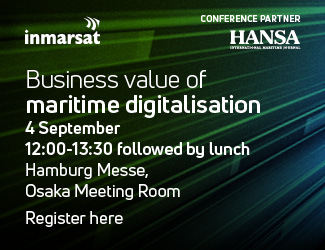
Digitalisation is changing the way vessels communicate, but shipping must overcome security and bandwidth obstacles to get past its digital infancy.
By Robert Kenworthy, GTMaritime CEO.
Alongside the massive opportunities digitalisation presents, it also poses some serious challen[ds_preview]ges. In my days at sea, there were very few communications and little to attack from a cyber security perspective. However, in today‘s environment, the drive to connect everything means that malware and cybersecurity concerns are ever-present. Ensuring crew training is up to date and that best practices are followed on remote ships is extremely difficult. Making sure shipboard software is up to date can be even more challenging.
Email is often seen as an easy attack vector from both a technology and social engineering perspective. Worryingly, we discover and stop around 31,000 of these unknown threats each month. That’s over 1,000 items a day.
With threats on the rise, we continuously develop and upgrade products to combat advanced malware and phishing. Technology solutions to detect threats are only one piece of the puzzle, though; we therefore offer customers free training and phishing tests to support crew competence.
The amount of data being transmitted to and from ships will only continue to increase. Ship performance monitoring and big data will be vital in addressing industry challenges such as decarbonisation, and investment in new technologies to improve operations and aid decision making shows no signs of slowing. The reach of digitalisation is therefore extending.
However, while vessels are transmitting and receiving huge amounts of data, most are not coping well. VSAT terminals installed a few years ago do not have a tremendous amount of bandwidth and installing a higher-powered satellite terminal with more bandwidth or investing in a higher-bandwidth plan are not necessarily the most cost-effective solutions. Shipowners and managers should also consider that bandwidth capacity varies by region, and the maximum bandwidth that a vessel receives may differ from what they experience – especially if there are multiple vessels and people trying to use the same connection simultaneously.
With third parties such as engine manufacturers, ECDIS operators and charterers driving greater data usage, pressure is mounting on shipowners to consider higher-bandwidth packages or risk data communications grinding to a halt during file transfers.
All-you-can-eat data packages are all very well, but the speed has to increase to cope with demand. If a ship has standard VSAT with average bandwidth, its connection can quickly become clogged unless a data-compression application is installed. GTReplicate, for example, allows IT managers to configure, monitor and execute simultaneous file transfers from a central location, providing greater control and visibility. It compresses data and ensures there is enough bandwidth for all tasks, allowing emails to continue being sent and received during large file transfers. Tasks can also be automated, and if the connection drops, it restarts from the point of interruption.

You are a maritime expert and have deep insight into a particular topic and a strong opinion on it? Send us your suggestion for a contribution to the HANSA Speakers‘ Corner.














